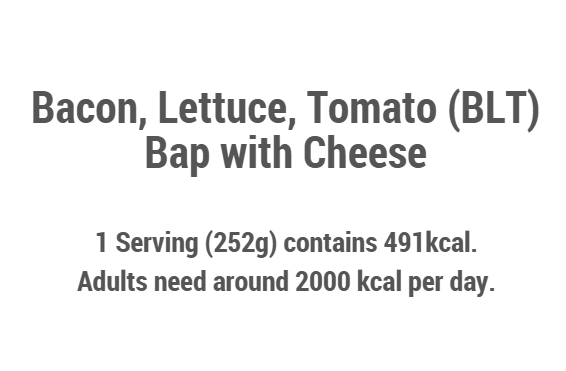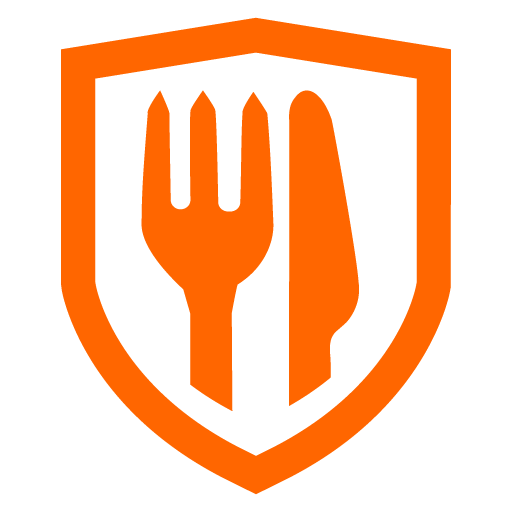
How to comply with the Out of Home Sector 2021 Regulations
Since April 2022, food businesses in England have to display calorie information on menus to help customers make informed choices.
Download free resources, request an expert consultation, and learn about calculating and displaying calories to comply and give your business a competitive edge.
Does your Business Need to Display Calories?
If your business sells food or drinks for immediate consumption, you may need to display calorie information. Use the sections below to check if the rules apply to you.
Which businesses must show calorie labelling?
Businesses with 250+ employees that sell food or drink for immediate consumption must display calorie information. This includes restaurants, cafés, takeaways, and similar outlets.
What foods need calorie information?
Calorie labelling applies to most food and drink prepared for immediate consumption, such as:
- Hot and cold drinks (e.g. coffee, tea, smoothies)
- Prepared meals (e.g. sandwiches, salads, hot meals)
- Pre-packed items for immediate consumption (e.g. bakery goods, ready meals)
What foods do not need calorie information?
Some items are exempt from calorie labelling, including:
- Unpacked food sold loose (e.g. fruit, vegetables, bread rolls)
- Alcoholic drinks over 1.2% ABV
- Food provided as part of catering (e.g. buffets, workplace canteens)
- Condiments or seasonings not pre-packed
- Daily specials (sold fewer than 30 days)
- Bespoke or custom-made food items
Other exemptions may apply depending on packaging or sale method (e.g. food sold by weight).
Does your business need to show calories on menus?
Find out in 1 minute if your business falls under the UK Calorie Labelling regulation
How to Accurately Calculate Calories for Menus
The method you choose to calculate calories will depend on the size and type of your foodservice operations. Here's a breakdown of three common methods you can use to calculate calories:
How to Display Calories to Consumers
Calories must be shown at the point of choice so customers can make informed decisions. Information must be permanent, clear, legible, and easily accessible to customers, regardless of the display method (i.e., visible without extra steps).
Wherever you display them, the following must always be included:
- The energy value in kilocalories (kcal).
- The portion size to which the calorie value relates.
- The statement: “Adults need around 2000 kcal a day.”
The following are accepted methods for display, with QR codes acting only as a supporting option:
Food Labels and Edge-of-Shelf Labels
For food sold in the out-of-home sector, including grab-and-go items and food displayed for immediate consumption, calorie information must be provided at the point of choice (i.e. not required to be on the product):
- Display energy in kilocalories (kcal) per portion or per item.
- Include the statement: “Adults need around 2000 kcal a day.”
- Ensure calorie information is clearly visible, permanent, legible, and updated when recipes change.
- Edge-of-shelf labels can complement the display of calorie information by offering it clearly next to the products, as long as the information is easily accessible at the point of choice.
Note: Pre-packed items are generally not covered by calorie labelling regulations for the out-of-home sector but must comply with separate food labelling laws for pre-packed food, which have different requirements for nutritional information.
Printed Menus and Menu Boards
Restaurants, cafés, and takeaways must show calories on menus and menu boards:
- Position calorie values next to the item name or description.
- Ensure the text is clear, easy to read, and consistently formatted.
- For menu boards, use font sizes large enough to be read from a distance.
Digital Menus
Calories must be displayed on digital menus before the customer places an order:
- Include calorie values in online ordering systems, apps, and self-service kiosks.
- Ensure formatting matches printed menus.
- Keep digital menus synchronised with recipe updates.
Digital Screens
For in-store digital signage or rotating screens:
- Ensure calories appear alongside product descriptions.
- Keep display times long enough for customers to read the information.
- Maintain good contrast and font sizing for visibility at distance.
QR Codes
QR codes can provide access to calorie information but cannot replace direct point-of-choice display:
- Place QR codes on tables, counters, or packaging.
- Link to a digital menu with full calorie details.
- Ensure linked menus are mobile-friendly and accessible.
- Important: QR codes alone do not meet legal requirements, as the consumer must take an extra step to access the information.
Sample Food Label with Calorie Labelling
This example shows how calorie information should appear on a edge-of-shelf food label. It includes kcal per portion, portion size, and the reference statement: “Adults need around 2000 kcal a day.” Note: Calorie information must be displayed in a font size at least as large as other key information, such as the price, which is not shown on the sample label.

Download Our Calorie Labelling Resources or Request a Consultation
Stay compliant with UK calorie labelling regulations by downloading our free expert resources
Download the Ultimate Guide to Calorie Labelling
A comprehensive PDF that covers everything you need to know about calorie labelling in the UK, including step-by-step guidance.
Download the Calorie Labelling Compliance Checklists
Checklists with 40+ questions to ensure your business is meeting the requirements for calorie labelling.
Request a Free Consultation
Book a free consultation with our regulatory experts to discuss your operations and workstreams to ensure you’re fully compliant.
Frequently Asked Questions
What type of foods require calorie labelling?
Foods that are prepared and sold for immediate consumption, such as restaurant meals, prepacked foods made and packaged on-site, and foods packaged at the customer’s request, must include calorie information. This includes sides, toppings, and any other food item that can be chosen by the customer.
What information must be displayed alongside calorie content?
The calorie information should include the energy content in kilocalories (kcal), a reference portion size, and a statement indicating that "adults need around 2000 kcal a day."
Where must calorie information be displayed?
Calorie information must be visible at the point where the customer makes their food selection. This includes printed menus, digital signage, shelf edge labels, and food display counters.
Does a QR code suffice for displaying calorie information?
No. The calorie information must be clearly visible and legible at the point where the customer chooses their food. A QR code is not considered sufficient on its own unless it is clearly accessible to the customer during the decision-making process.
My business has less than 250 employees but it is part of a franchise, do I need to display calorie information?
Yes, if your business is part of a franchise or symbol group with similar food offerings, you must comply with calorie labelling regulations. The parent company is responsible for ensuring compliance.
Who is responsible for calorie labelling in tenant-managed pub groups?
The head office or chain management is responsible. If they benefit financially, they must ensure compliance with the regulations.
Do businesses need to provide a menu without calorie information?
Businesses are not required to provide an alternative menu without calorie information, but they must offer the menu with calorie information as the default. A menu without calorie details can only be provided at the customer's express request.
How should calorie content be calculated for menu items?
Calorie content should be calculated using either the manufacturer’s analysis, average ingredient values, or generally accepted data sources. The calculation method should be reliable, with information based on either direct testing or trusted food composition data.
How should calorie labelling be handled for menu items with variable ingredients or portion sizes?
For food items with multiple options (e.g., add-ons or customisable ingredients), calorie information should reflect the standard or default portion size. Additional options, such as extra toppings or larger portion sizes, should have separate calorie information listed accordingly.
Is calorie labelling required for food sold through third-party apps or delivery platforms?
Yes, businesses are required to provide accurate calorie information for food sold through third-party apps and online platforms. The responsibility for providing this information lies with the food business operator.
How should businesses manage calorie labelling for complex menu items or meal combinations?
For complex meals or items with multiple component options, calorie information must be provided for each individual component, with a clear indication of the total calorie content for the entire meal or serving size. This ensures transparency for consumers making informed choices.
What are the penalties for non-compliance with calorie labelling regulations?
Failure to comply with calorie labelling regulations may result in fines or other enforcement actions, including inspections by compliance officers. Inspections will focus on the accuracy and visibility of calorie information, as well as the reliability of the methods used to calculate the calorie content.
Does calorie labelling apply to prepacked food for direct sale (PPDS)?
Yes, PPDS food items - such as sandwiches or salads made and packaged on-site-must display calorie information on the packaging or on a shelf edge label if the product is displayed in a retail environment.
What is the acceptable methodology for calculating calorie content?
Calorie information must be calculated using scientifically accepted methods, such as the Atwater factors (4 kcal per gram for protein and carbohydrates, 9 kcal per gram for fat). Digital tools like menu management systems can be used to accurately calculate and display calorie information on menus and labels.
How should calorie labelling be handled for menu items with variable ingredients or portion sizes?
For food items with multiple options (e.g., add-ons or customisable ingredients), calorie information should reflect the standard or default portion size. Additional options, such as extra toppings or larger portion sizes, should have separate calorie information listed accordingly.
Is calorie labelling required for food sold through third-party apps or delivery platforms?
Yes, businesses are required to provide accurate calorie information for food sold through third-party apps and online platforms. The responsibility for providing this information lies with the food business operator.
